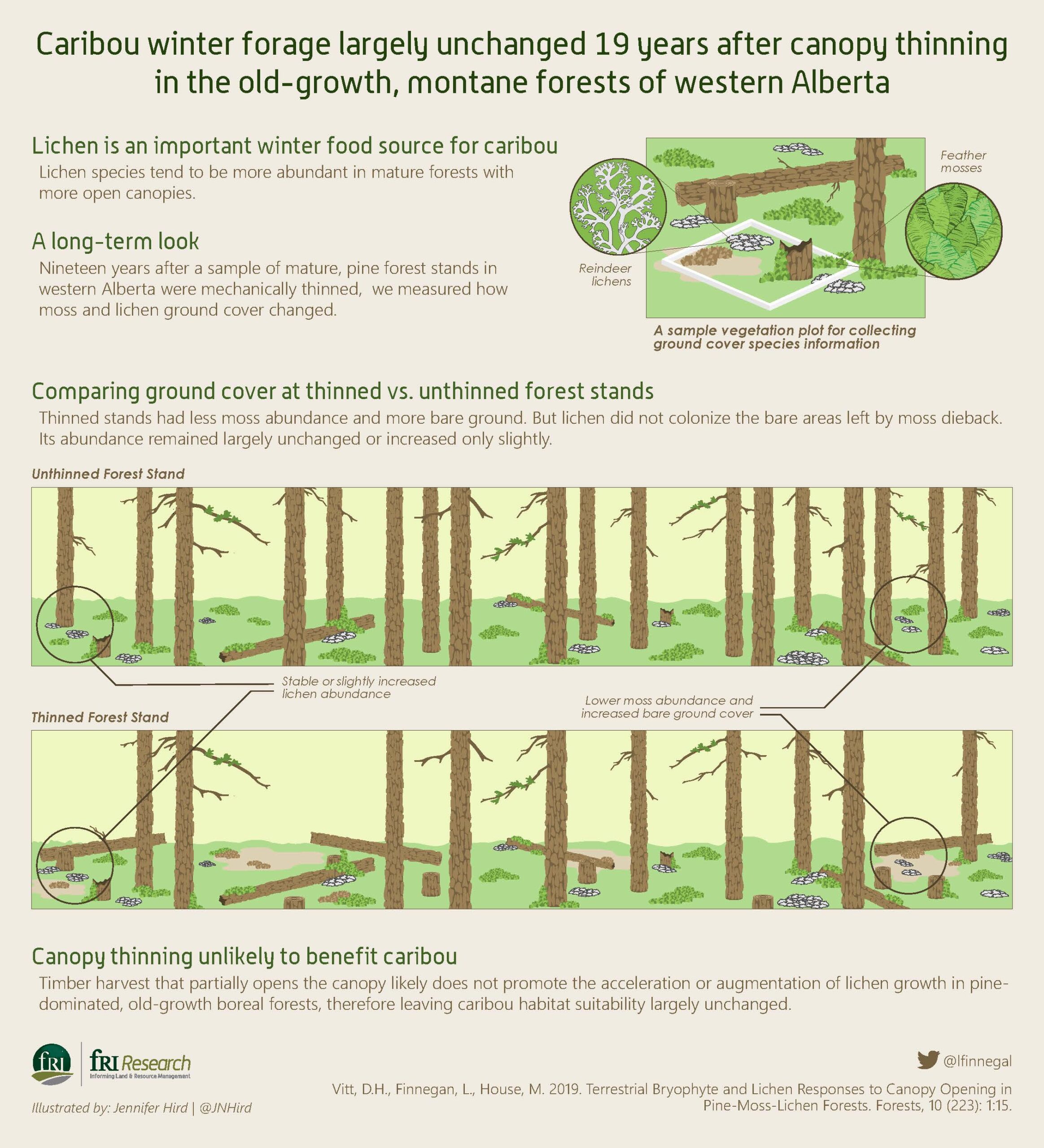Abstract
Pinus contorta-dominated montane forests of western Canada with relatively dense tree canopies have ground layers with abundant bryophytes, especially the feather mosses (Pleurozium schreberi and Hylocomium splendens), while those with more open canopies are dominated by species of reindeer lichens, especially Cladonia arbuscula s.l. and C. rangiferina s.l. Woodland caribou (Rangifer tarandus caribou), which are a threatened species in Alberta, prefer open, Cladonia-dominated forests for their winter food supply. This study investigated if opening the canopy by thinning mature montane forests of the Canadian Rocky Mountain foothills would change the abundance of lichens and bryophytes. In 1997, forests were thinned by removing 20%, 40%, and 60% by volume. In 2016, 19 years after treatment, we re-surveyed a subset of these plots (n = 97) for lichen and bryophyte abundance and species richness by utilizing the amount of canopy opening at the plot level as our prime gradient. We then used ordination to determine the relationship of control plots to treatment plots. In uncut forest, the control plots were highly variable, but were mostly dominated by feather mosses, with little or no bare ground. Feather moss abundance was lower in treatment plots when compared to control plots, while cover of bare ground was greater. Overall, 19 years after treatment, we found that, in treatment plots, lichen abundance remained stable or slightly increased, feather mosses decreased markedly, and unoccupied space was double that of the control plots. We conclude that the canopy opening had little effect on understory and ground layer diversity, but considering species abundance (1) bryophytes have not recovered after canopy opening, (2) populations of reindeer lichens increased marginally, but have not colonized areas left bare from bryophyte dieback, and (3), after 19 years there, remains unoccupied areas of bare ground in plots with a reduced canopy cover. Our study demonstrated that, with canopy cover reduction resulting from forest thinning operations, the ground layer diversity is maintained, but recovery of ground layers in old-growth pine-dominated forests is not promoted. Therefore, timber harvest that partially opens the tree canopy is unlikely to benefit caribou by augmenting or accelerating winter food availability and habitat suitability for caribou.
Read the full paper (open access) here.
Citation
Dale H. Vitt, Laura Finnegan, & Melissa House. “Terrestrial Bryophyte and Lichen Responses to Canopy Opening in Pine-Moss-Lichen Forests.” Forests. 10(3), 233; doi: 10.3390/f10030233










